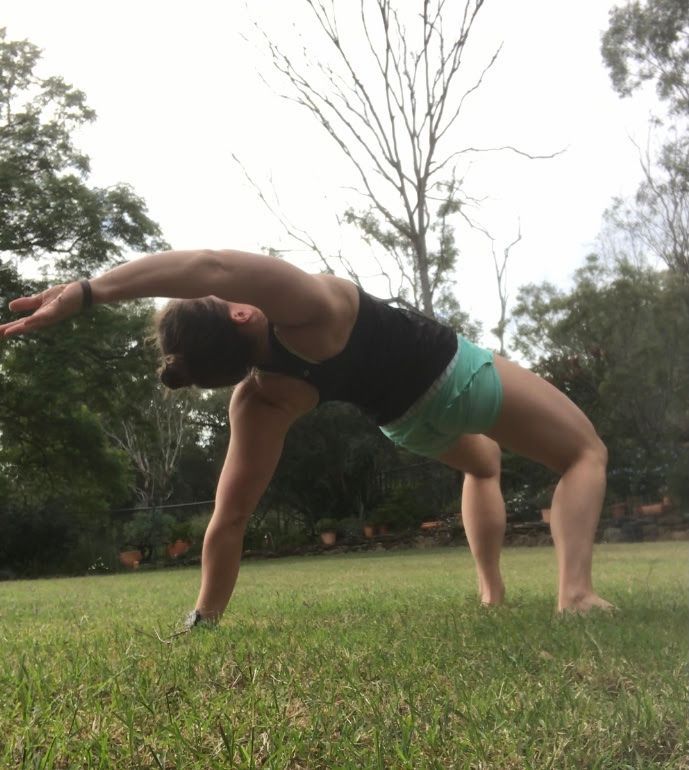THREE FLEXIBILITY MOVEMENTS TO HELP OFFICE WORKERS
What’s one important fact about being human that’s often overlooked in our contemporary society? We are designed to move… and not just for an hour-long class once a day, (though these classes are an awesome bonus to have in your life!). No matter how fantastic that class is, our bodies—how they look, how they feel, how they move, and how they respond to our demands—are the result of our general overall habits. Our bodies are meant to move regularly.
Instead, many people in today’s society have predominantly sedentary day jobs: put more simply, many of us are office workers. And as anyone who has spent any period of time working in an office job can tell you, it’s all too easy to get sucked into the vortex of our computer. Powering through our email inbox, creating the perfect spreadsheet, fielding phone calls from clients and our colleagues, it’s only when we look up at the clock that we realise we haven’t moved in hours.
OKAY, OFFICE WORKERS SIT A LOT: WHAT’S YOUR POINT?
Staying in one position for hours on end is, on its own, suboptimal for our health and wellbeing. But when we add in the complicating factor of posture during that time, we’re compounding the stress on our body. Few of us maintain the recommended tall and neutral spine when we’re focusing or trying to conquer the dreaded post-lunch slump. (It’s worth pointing out here that even if you do maintain excellent posture for eight hours a day, we’re still sitting in a very closed position with limited range of movement—you’ll still benefit from incorporating these exercises into your day.)
In fact, that’s exactly what a lot of us do: slump. We hunch forward over our computers, head jutting forward, shoulders rounded and our whole body curving in towards the desk.
Newsflash: sitting like this isn’t good for us.
But then, you probably already knew that, didn’t you? After all, lower back, neck and shoulder pain are common ailments in desk-bound office workers, as are tension headaches and, for some, butt and leg discomfort. We know sitting all day doesn’t make us feel good. And we also know that when we then try to train and push our bodies, or try to master new positions, it can be really hard and sometimes uncomfortable.
WELL, THANKS FOR BRINGING ME DOWN… WHAT’S THE ANSWER THEN?
Luckily, there are a few simple ways to make sure we’re giving our body what it needs and allowing it to get the most benefit out of those classes at the gym.
MOVE MORE AND MORE REGULARLY
The first is to try and get up from our desks regularly: walk to the kitchenette, take a short stroll outside during your lunch break, or walk to your colleague’s desk to ask that question. An extra bonus is that doing so will help with mental clarity, making you more efficient!
MORE FLEXIBILITY MOVEMENTS!
Our second answer, however, is to try to incorporate some daily flexibility movements that will counteract the negative effects of long hours spent working from your desk: and we’ve got just the thing to help you out. These three flexibility movements are designed to open your chest and thoracic spine, as well as strengthen and increase shoulder mobility. Even better, none of them require any equipment: just clear some space on the floor, make sure you’re using deep breathing and moving with intention, and get started!
Our three favourite flexibility moves for office workers are:
THORACIC LUNGE ROTATION
Start in a tall lunge position next to a wall, with your inside leg up against the wall—in this photo, the left leg. Place your hands behind your head, either with your fingertips just touching behind your ears, or fingers interlaced.

Breathing steadily and keeping your hips and torso still, move the inside elbow (in this case, the left) so that it traces an arc along the wall. Aim to keep the armpit as close to the wall as possible and move only through the thoracic spine.
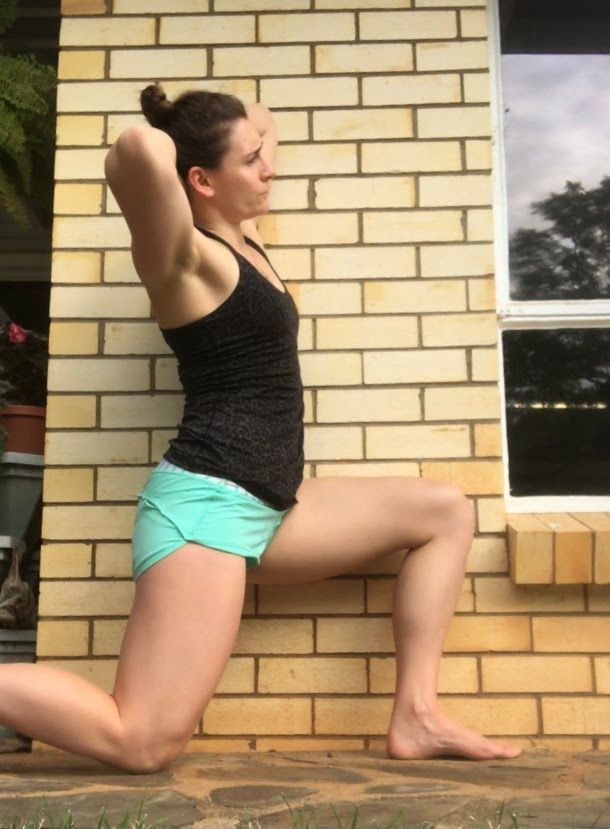
Then reverse the movement and return to the starting position: this is one repetition. Throughout, it’s very important to ensure the outside hip stays still: if the hip rotates forward, this compensates for thoracic mobility, and reduces the amount of work required (and therefore the benefit for the movement!).
Complete two sets of five repetitions per side.
DOWN-FACING HOVERS
Start lying face down on the floor with your legs together and arms stretched out overhead, roughly shoulder-width apart.
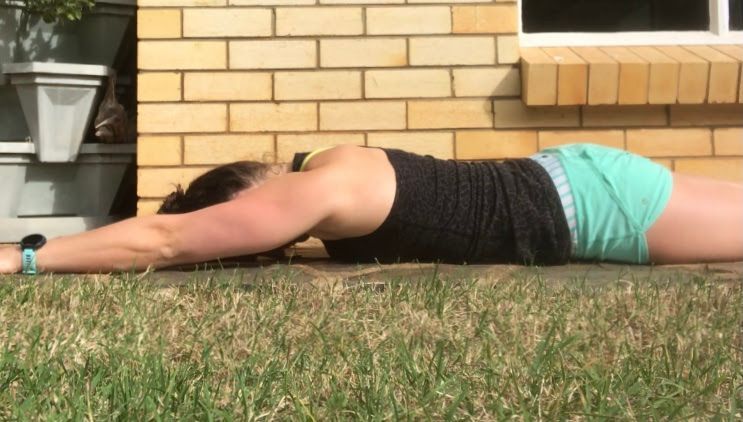
Leaving the lower body relaxed and allowing the forehead to remain resting on the ground, slowly raise the arms as high as possible without twisting or shifting and hold there for a slow count to five. Leaving the lower body relaxed and allowing the forehead to remain resting on the ground, slowly raise the arms as high as possible without twisting or shifting and hold there for a slow count to five.
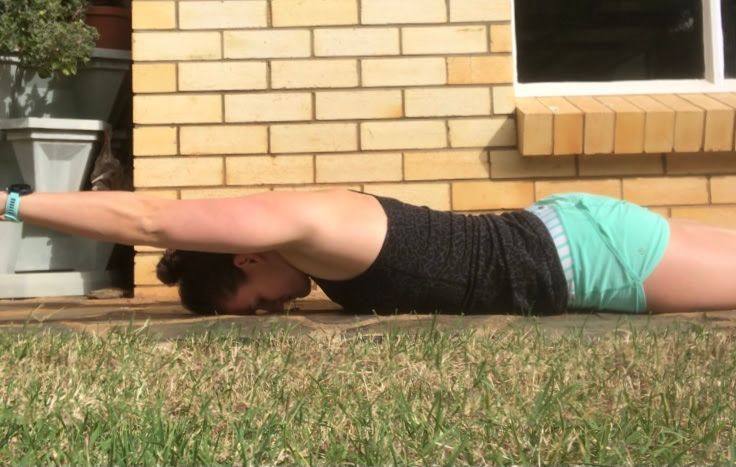
Then return the arms to the floor. This is one repetition. Throughout the movement, ensure you are remaining relaxed through the body and only using the upper back (between the shoulder blades) and not the neck muscles or traps.
Complete two sets of ten repetitions.
TWISTING BEAR
The twisting bear starts from what we call the bear or ‘A-frame’ position. This is where both your hands and your feet are on the ground with your hips high in the air making an ‘A’ shape. If you have tight hamstrings, simply move your feet a bit further away to flatten the shape out slightly, have your toes on the ground rather than your whole foot, or allow the knees to bend slightly.
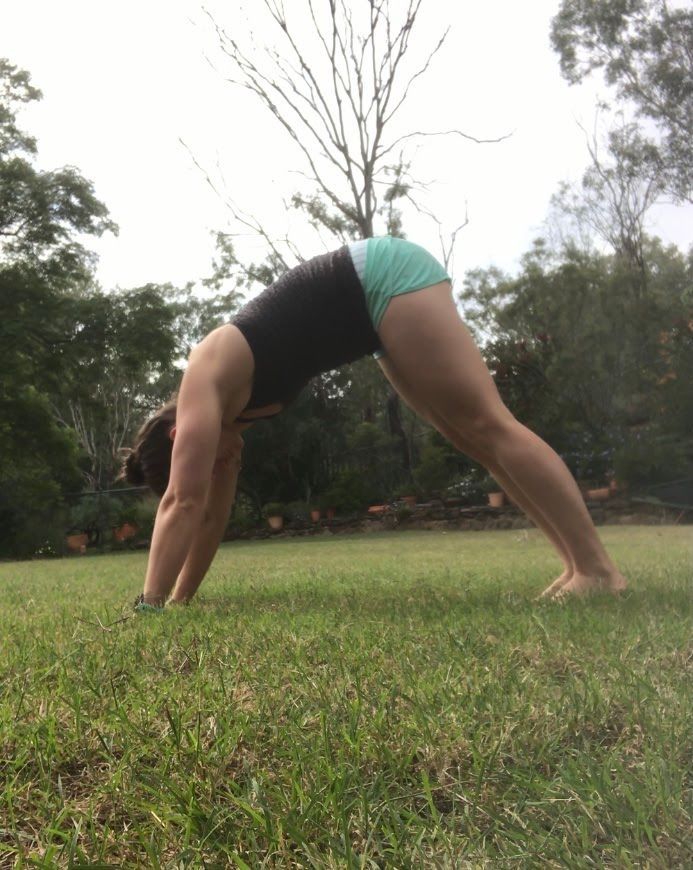
From here, thread one foot through under the body to the opposite side. In this photo, the left foot is moving under the body to the right side.
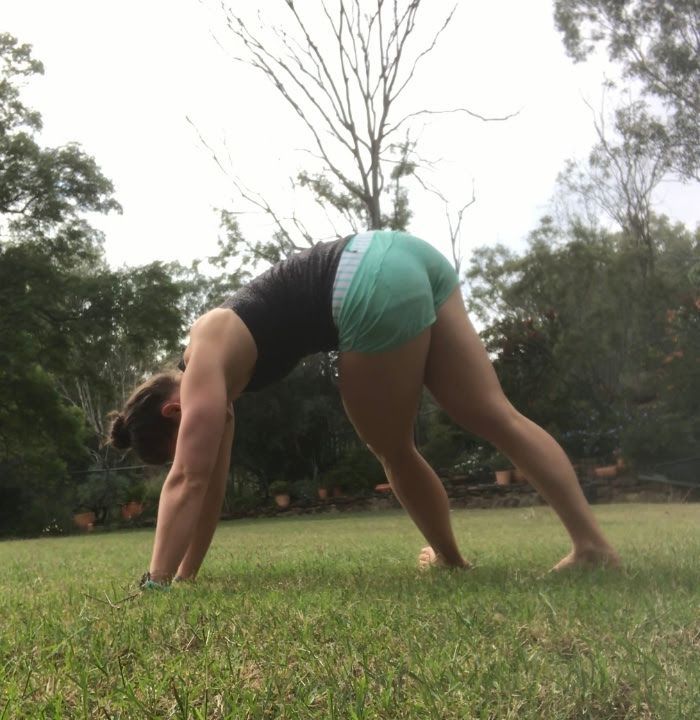
Finish with the arm stretched out overhead, arching through the thoracic and opening at the hips.
Reverse the movement to return to the A-frame position. This is one repetition.
Complete two sets of five repetitions per side.
If you’re an office worker (or anyone, really!) then adding some of these simple thoracic mobility exercises into your daily life will help counteract the negative effects of sitting at a computer all day. Continually developing this mobility will make progressing in the gym easier and safer. Who’s keen to give these a try this month?
We look forward to seeing you in the gym!
— Dalecki Strength
DALECKI STRENGTH

